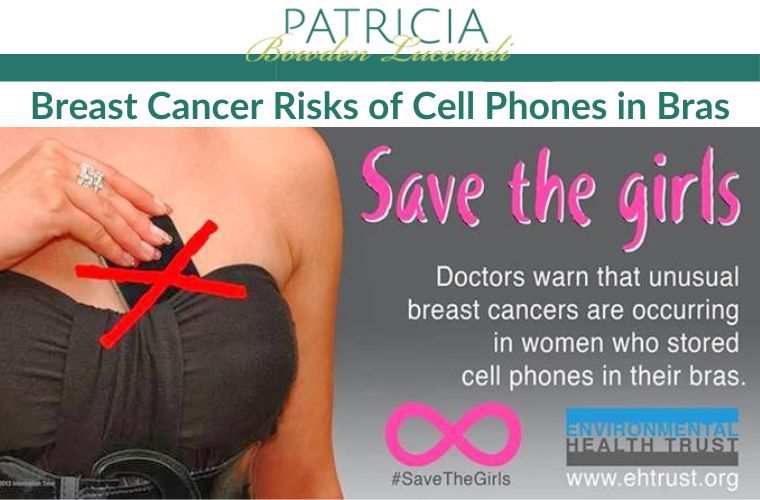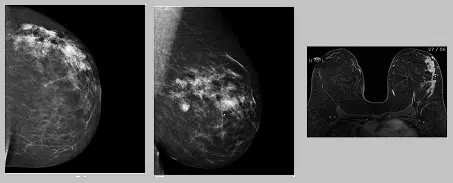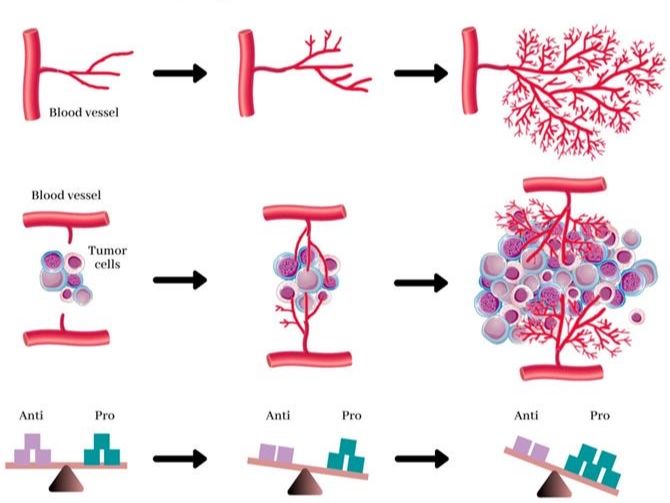Breast Cancer Risks of Cell Phones in Bras
Leave a Comment
The following article was originally written by Daniel T. DeBaun and reprinted with permission from Defender Shield.
It seems as though fashion designers forgot to think of practicality or function when designing women’s clothing.
With annoyingly small pants pockets that can’t fit more than a key or a lipstick tube, with some “pockets” that are sewed shut or simply try to give off the appearance of a pocket, women have had to improvise on their own.
Hence, the phone-in-the-bra phenomenon.
Bras were not designed to hold phones and cash, yet females are stashing their accessories in this make-shift pocket for lack of a better option. Whether it’s at the gym, getting drinks downtown, or running errands, this desperate act has become a commonplace trend.
Now, designers—who are finally thinking of female clothing practicality—have even put pockets on bras and sports bras!
However, as much as we understand the necessity of it, holding a cell phone in your bra can be compromising your health.
Cell phones may seem harmless, yet recent research shows there may be a link between non-ionizing cell phone radiation and tumor growth in the breast. This connection has prompted a proliferation in research on cell phone radiation and the discovery of non-intuitive correlations between cell phones and breast cancer.
How Cell Phone Radiation Affects Breasts
In a 2013 University of California study, four women between the ages of 21-39 were found to have multi-focal invasive breast cancer or breast cancer that arose from more than one location on the breast tissue.
These women had no family history of breast cancer and tested negative for BRCA1 and BRCA2 and other known genetic breast cancer risks.
However, these women all regularly carried their smartphones directly against their breasts in their brassieres for up to 10 hours a day for several years. Each developed tumors in the areas of their breasts, immediately underlying their phone placement.

Mammograms show clustered calcification (in white) corresponding to multiple sites of disease for case patient 1. Source: PubMed
- Case 1 involved a 21-year-old female, who experienced spontaneous bloody nipple discharge. She kept her cell phone tucked in her bra on the left side for several hours each day.
- Case 2 involved another 21-year-old female who discovered a hard mass in the area where her cellular phone was kept in direct contact with her left breast. She had placed her cellular device in her bra for 8+ hours a day for the course of 6 years. Later studies showed that her cancer had spread to the bone.
- Case 3 involved a 33-year-old female who discovered two masses in the upper outer quadrant of her right breast, directly underneath where her cellular phone was placed against her bra. She had placed her cell phone in her bra intermittently for 8 years. Routinely, she would place her cell phone in her bra and use the GPS application to determine her location while jogging. Cancer had spread to her lymph node.
- Case 4 involved a 39-year-old female with three distinct masses in the area of cellular phone contact with her right breast. She had placed her cell phone in her bra while commuting to work and used Bluetooth to talk for hours each day for the past 10 years. Multiple lymph nodes tested positive for spread of the disease.
In the study, all four cases showed striking similarity. All tumors were hormone-positive, low-intermediate grade, and possessed nearly identical morphology. Lesions were found in the breast tissue. MRI scans lit up and showed dense masses.
Due to the similarity of the disease and cases, the authors strongly emphasize the need for more safety data on the effects of prolonged direct contact with cell phones. They point out that breast cancer is typically uncommon for women in their 20s and 30s, as less than 5% of women in this age range typically get the disease.
Usually, when one has this disease, it is associated with a genetic predisposition, of which, none of these women had. The researchers concluded that there is probable evidence that the non-ionizing cell phone radiation causes breast cancer.
In another meta-analysis conducted in 2014, 16 research reports of case-control studies published between 2000 and 2007 were analyzed to look for the relationship between exposure to cell phone radiation and breast cancer. The researchers found that low-level radiation may increase the risk of breast cancer in women with the relative risk being 1.10 overall, and 1.25 in the non-menopausal group. The relative risk in the menopausal group was not significant (1.04).
As is necessary to prove any theory, a relationship would need to be confirmed on a much larger scale with more test subjects. Because there is little laboratory or clinical evidence in existence to-date, these studies were only able to show suggestive evidence and are not considered conclusive.
Unfortunately, researchers know very little about cancer to-date and only a small amount of work has thus far been done in this particular area. Scientists are still working on understanding the disease of cancer itself and have only recently elucidated its mechanism of action. Interestingly, the International Agency for Research on Cancer has only classified Radio Frequency (RF) waves of the electromagnetic spectrum, the form that cellular devices emit, as a possible human carcinogen.
Limited Attention to the Issue
Unfortunately, not many people seem to be aware of the health risks of cell phones, and a woman with a cell phone sticking out of her bra or bra strap is a normal—and frequent—occurence.
Efforts, though, have been made to inform the public of the correlation between breast cancer and cell phone contact. Popular television personalities, including medical doctor, Dr. Oz, have even gone so far as to devote entire segments to this issue. Dr. Oz released a segment entitled, “Why You Should Keep Your Cell Phone Out of Your Bra.” Local news segments also aired when the research first came out.
Nonetheless, the general public seems to be largely ignorant of the potential danger or have forgotten the research results, if they were ever informed. A Google search on the keyword “breast cancer and cell phones” yields very few results, most outdated by a year.
Surprisingly, even on the Susan G. Komen website, cell phones are listed as one of the factors that do not increase the risk of breast cancer. Perhaps this is because there has been limited study and experts provide confusing information.
On the American Cancer Society website, they acknowledge that there may be a link of women developing cancer from cell phones placed in their bras, but also that it may all be a coincidence. We just don’t know because there has been such limited study. Yet, the amount of information presented on another page of the American Cancer Society website is so overwhelming, it is hard to decipher the final conclusion on what types of cancers may or may not be caused by cell phones, how many, and what type of studies were done where.
What Women Can Do
Until more data becomes available on cell phone radiation, it is generally recommended by experts to avoid any kind of skin contact with cell phones.
In the fine print, many cell phone manufacturers have actually even placed a warning in their manuals, stating that direct contact with skin should be avoided. For instance: the iPhone user manual advises that the phone be kept 6 inches or 15 cm (5/8 inch) or more away from your body.
More research is clearly needed on cell phone radiation, in order for any kind of regulation to make its way through and be noticed by the public. While consumers are waiting for science and laws to catch up, it is important to do what you can to be safe.
Avoid unnecessary exposure to cell phone radiation. Tell your friends and loved ones about this, too. The risk of breast cancer from cell phone radiation is not worth the convenience of storing your cell phone in your bra.


